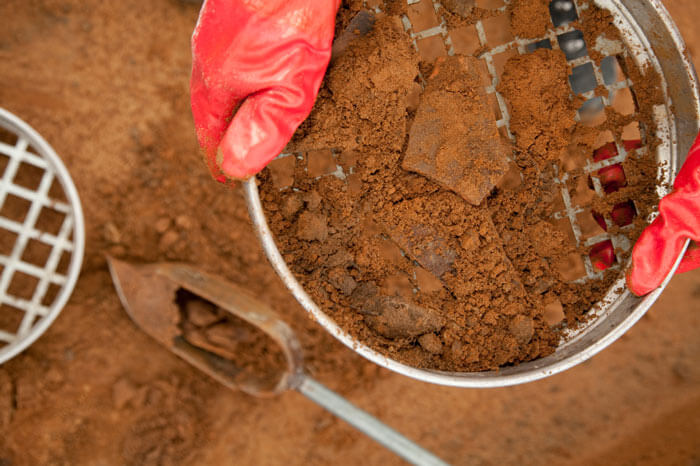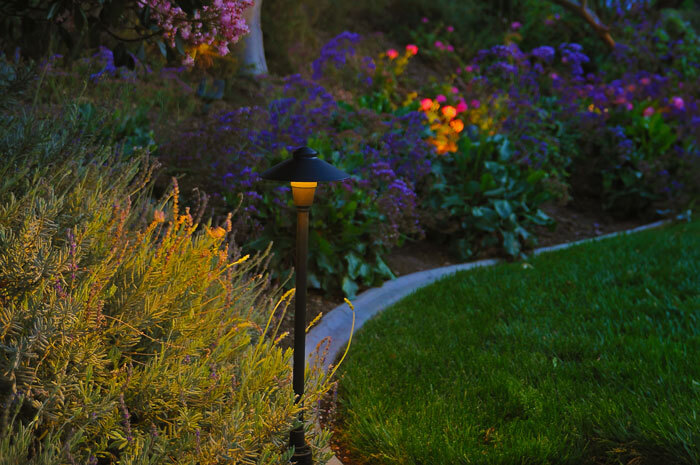
Adding a soil amendment, also called a soil conditioner, helps improve lawn—and other plants—growth and health. The type of amendments that need to be added depend on the current soil composition, the climate and the type of grass. Some of the various amendments include:
- Lime (makes soil less acidic)
- Fertilizers for plant nutrients (i.e. manure, peat, or compost)
- Materials for water retention (i.e. clay, shredded bark, or vermiculite)
- Gypsum (releases nutrients and improves structure)
- Clay (allows water to reach the plant root)
Testing Your Soil’s pH
It is best to test your own soil, or obtain test results from a professional testing service, before applying any soil amendments. If your test shows a low pH, add lime according to the test recommendations or based on the table below. Using too much soil amendment can damage your lawn, so be conservative if you aren’t certain of the test results.
IMPORTANT: Do not apply lime with fertilizer mixed in the same spreader. The resulting chemical reaction will release the nitrogen you want for your grass into the air.
Raising pH
Lime soil amendments come in various forms, from ground oyster shells to liquids. Agricultural-ground limestone is the preferred type to use for your lawn because it is readily available and you can easily, accurately and safely apply it using a drop or rotary spreader. There are two types of agricultural ground limestone: dolomitic and calcitic. Both contain calcium carbonate, a grass nutrient and a neutralizer for acidic soil.
Dolomitic Limestone
Dolomitic Limestone contains magnesium, another important nutrient, as well as calcium carbonate. If your soil is already high in magnesium, using dolomitic limestone as an amendment can be harmful for your lawn.
Calcitic Limestone:
Calcitic Limestone does not contain magnesium, making it more appropriate if your soil is already high in magnesium.
Limestone Application
Amend your lawn’s soil by spreading finely ground limestone first — it will act quicker — then change to a coarser limestone when you are getting closer to the correct range. Grinds are rated by the fineness of sieves that the limestone will pass through and should be easy to identify from the packaging.
Limestone purity is rated based on its Calcium Carbonate Equivalent (CCE) and needs to be taken into account when applying the amendment to your soil. For example, if the CCE of your limestone is 80 and the test recommendations are based on a CCE of 100, increase the application amount by 20 percent.
The more clay and organic content in your soil, the more lime amendment you will need to correct the pH, while sandy soils require less lime to raise pH. If you need to add more than 40-pounds of lime per 1,000-square feet to correct your pH, do it in two or more applications. After spreading lime, water the lawn to wash the particles off the grass leaves and into the soil.
The recommendations below are in pounds per 1,000-square feet when using CCE-rated, finely ground limestone. Do not add lime if your pH is 6.3 or higher.
| Fescues | Kentucky blue/Bermuda/Rye | |||
|---|---|---|---|---|
| pH Adjustment | 5.8-6.2 to 6.5 | 5.3-5.7 to 6.5 | 4.8-5.2 to 6.5 | 4.0-4.7 to 6.5 |
| Sands & Sandy Loams | 0 | 25 | 50 | 75 |
| Loams & Clays | 0 | 35 | 75 | 100 |
| Sands & Sandy Loams | 25 | 50 | 75 | 100 |
| Loams & Clays | 35 | 75 | 100 | 100 |
Lowering pH
To lower the pH, add sulfur according to your soil test recommendations. Sulfur acts within one month to lower soil pH. Apply sulfur over the course of several weeks and water after each application.
Sulfur soil amendments are also available in the form of compounds, such as ammonium sulfate, which can be used in place of elemental sulfur, but using too much can burn your lawn. See amendment packaging for details on amounts that can be safely applied to turf grass. If you are relying on your own test kit and not a professional test, follow the recommendations—based on pounds per 1,000-square feet—in the table below.
| Fescues | Kentucky blue | Bermuda | |
|---|---|---|---|
| pH Adjustment | 7.5 to 6.5 | 8 to 6.5 | 8.5 to 6.5 |
| Loam | 18 | 34 | 57 |
| Sandy Soil | 12 | 28 | 46 |
| Clay | 23 | 46 | 69 |
Getting your lawn back to its verdant best begins with checking on and, if necessary, improving the health of your soil with amendments. Is your soil’s pH in a good place, but your grass still seems to need nutrients? Check out our fertilizing recommendations for some extra help.



